Superfund Sites in Reuse in Louisiana
If you are having trouble viewing the map in your browser, click the 'View larger map' link below
Agriculture Street Landfill
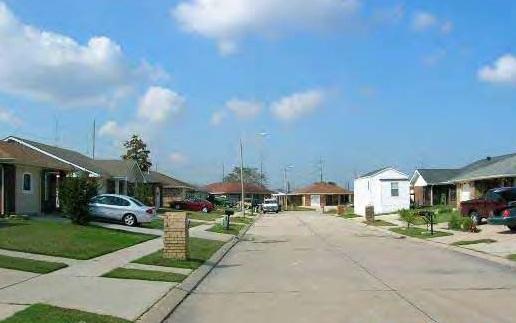 Agriculture Street LandfillThe Agriculture Street Landfill Superfund site is located in New Orleans, Louisiana. The 95-acre site operated as a municipal dump from 1909 until 1957. From the 1970s through the late 1980s, parties developed about 47 acres of the site for private and public uses. At that time, the site supported 67 single-family homes, multiple-family dwellings, retail businesses, an elementary school, a community center, a recreation center and an electrical substation. Before 1994, access to the undeveloped portion of the former landfill was unrestricted. This access allowed unauthorized waste disposal and exposure to contaminants. EPA listed the site on the Superfund program’s National Priorities List (NPL) in 1994. Between 1994 and 1997, EPA dug up and disposed of nearly 70,000 tons of material. EPA replaced this material with a permeable geotextile mat/marker in the subgrade, clean fill and sod. Hurricanes Katrina and Rita destroyed many structures on site, with only single-family homes and the electrical substation remaining in operation. All other structures on site await demolishing or redevelopment. The rest of the site remains undeveloped and vegetated. The U.S. Army Corps will temporarily relocate a rail line across part of the undeveloped property as part of an infrastructure improvement project along the Florida Canal.
Agriculture Street LandfillThe Agriculture Street Landfill Superfund site is located in New Orleans, Louisiana. The 95-acre site operated as a municipal dump from 1909 until 1957. From the 1970s through the late 1980s, parties developed about 47 acres of the site for private and public uses. At that time, the site supported 67 single-family homes, multiple-family dwellings, retail businesses, an elementary school, a community center, a recreation center and an electrical substation. Before 1994, access to the undeveloped portion of the former landfill was unrestricted. This access allowed unauthorized waste disposal and exposure to contaminants. EPA listed the site on the Superfund program’s National Priorities List (NPL) in 1994. Between 1994 and 1997, EPA dug up and disposed of nearly 70,000 tons of material. EPA replaced this material with a permeable geotextile mat/marker in the subgrade, clean fill and sod. Hurricanes Katrina and Rita destroyed many structures on site, with only single-family homes and the electrical substation remaining in operation. All other structures on site await demolishing or redevelopment. The rest of the site remains undeveloped and vegetated. The U.S. Army Corps will temporarily relocate a rail line across part of the undeveloped property as part of an infrastructure improvement project along the Florida Canal.
For more information:
American Creosote Works, Inc. (Winnfield Plant)
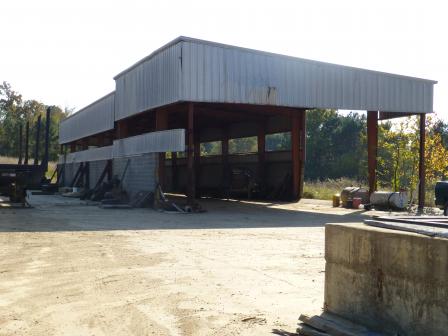 American Creosote Works, Inc. (Winnfield Plant)The 34-acre American Creosote Works Superfund site is located in Winnfield, Louisiana. From 1901 to 1979, companies conducted wood treatment operations on site. In 1981, Stallworth Timber Company purchased the site and continued wood treatment at the site. Site operations resulted in contamination in soil and storage areas. Louisiana Department of Environmental Quality site inspections between 1982 and 1986 found chemical spillage, abandoned pits and containers, and off-site contamination. EPA added the site to the Superfund program’s National Priorities List (NPL) in 1992. Cleanup activities included destruction of liquid contaminants, soil caps, soil treatment, and monitoring of groundwater. EPA is working with the City of Winnfield to transition the site to industrial use. Currently, a local construction firm uses a portion of the site to store heavy equipment.
American Creosote Works, Inc. (Winnfield Plant)The 34-acre American Creosote Works Superfund site is located in Winnfield, Louisiana. From 1901 to 1979, companies conducted wood treatment operations on site. In 1981, Stallworth Timber Company purchased the site and continued wood treatment at the site. Site operations resulted in contamination in soil and storage areas. Louisiana Department of Environmental Quality site inspections between 1982 and 1986 found chemical spillage, abandoned pits and containers, and off-site contamination. EPA added the site to the Superfund program’s National Priorities List (NPL) in 1992. Cleanup activities included destruction of liquid contaminants, soil caps, soil treatment, and monitoring of groundwater. EPA is working with the City of Winnfield to transition the site to industrial use. Currently, a local construction firm uses a portion of the site to store heavy equipment.
For more information:
- Finding a Market for Recovered Creosote: Green Remediation at the American Creosote Works, Inc. (Winnfield Plant) Superfund Site in Northern Louisiana (PDF) (10 pp, 934 K, About PDF)
- Superfund Site Profile Page
Bayou Bonfouca
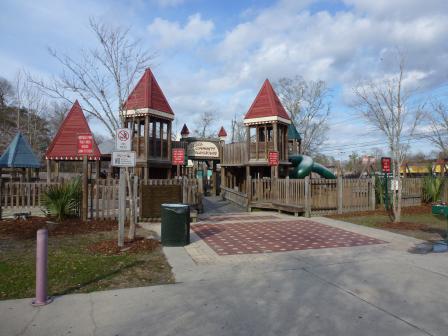 Bayou BonfoucaAmerican Creosote Works, Inc. operated a creosoting facility at the 54-acre Bayou Bonfouca Superfund site in Slidell, Louisiana, for over 100 years until a fire destroyed the plant in the early 1970s. Waste disposal practices released contaminants into the soil, bayou water and surrounding area. In 1983, EPA added Bayou Bonfouca to the Superfund program’s National Priorities List (NPL). Cleanup actions included removing and consolidating on-site contaminated soils, dredging Bayou Bonfouca’s contaminated sediments, on-site incineration of contaminated soils and sediments, and removing and treating contaminated groundwater. The Louisiana Department of Environmental Quality (LDEQ) now maintains the site’s ground water pump and treat system and performs routine groundwater monitoring. Today, the efforts of site owners, LDEQ, EPA and the City of Slidell have restored over a mile of the Bayou for aquatic life and recreational and public reuse. The City installed a public boat launch on the north shore of Lake Ponchartrain to provide boater’s access to Bayou Bonfouca and the former site owners donated the prime waterfront property to the City. The site now houses the City’s public operations offices and other city services. The City also coordinated with EPA and LDEQ to develop community green space and a public park, now known as Heritage Park. The park includes playgrounds, picnic areas, walking/jogging paths, restrooms and a large gazebo for performances and community gatherings. In 2012, the City of Slidell received a $1.5 million Boat Infrastructure Grant (BIG) to promote boating access along Bayou Bonfouca near the site. Coordination among the City, LDEQ and EPA is paving the way for the “Heritage Park Marina Project”. When operational, the Marina Project will include floating docks, piers, new sidewalks and more to encourage recreational boating on Bayou Bonfouca. Construction on the Marina Project is anticipated to start in 2015.
Bayou BonfoucaAmerican Creosote Works, Inc. operated a creosoting facility at the 54-acre Bayou Bonfouca Superfund site in Slidell, Louisiana, for over 100 years until a fire destroyed the plant in the early 1970s. Waste disposal practices released contaminants into the soil, bayou water and surrounding area. In 1983, EPA added Bayou Bonfouca to the Superfund program’s National Priorities List (NPL). Cleanup actions included removing and consolidating on-site contaminated soils, dredging Bayou Bonfouca’s contaminated sediments, on-site incineration of contaminated soils and sediments, and removing and treating contaminated groundwater. The Louisiana Department of Environmental Quality (LDEQ) now maintains the site’s ground water pump and treat system and performs routine groundwater monitoring. Today, the efforts of site owners, LDEQ, EPA and the City of Slidell have restored over a mile of the Bayou for aquatic life and recreational and public reuse. The City installed a public boat launch on the north shore of Lake Ponchartrain to provide boater’s access to Bayou Bonfouca and the former site owners donated the prime waterfront property to the City. The site now houses the City’s public operations offices and other city services. The City also coordinated with EPA and LDEQ to develop community green space and a public park, now known as Heritage Park. The park includes playgrounds, picnic areas, walking/jogging paths, restrooms and a large gazebo for performances and community gatherings. In 2012, the City of Slidell received a $1.5 million Boat Infrastructure Grant (BIG) to promote boating access along Bayou Bonfouca near the site. Coordination among the City, LDEQ and EPA is paving the way for the “Heritage Park Marina Project”. When operational, the Marina Project will include floating docks, piers, new sidewalks and more to encourage recreational boating on Bayou Bonfouca. Construction on the Marina Project is anticipated to start in 2015.
For more information:
Bayou Verdine
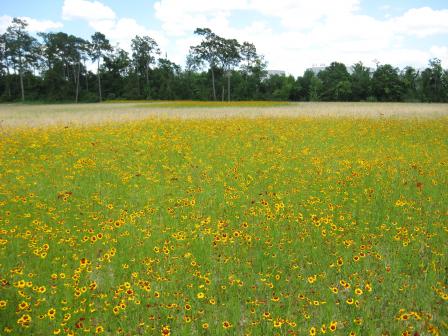 Bayou VerdineThe Bayou Verdine site is located within the Calcasieu Estuary in Lake Charles, Louisiana. Surrounding areas are a mix of commercial and heavy industrial uses, with some natural riparian areas as well. Over time, contaminants from various heavy industrial activities, localized refinery operations, and stormwater runoff accumulated in sediments and surface water of Bayou Verdine. In 1999, EPA began studying Calcasieu Estuary and found high levels of metals and hazardous compounds. In 2011, EPA and the responsible parties (RPs), Phillips 66 and Sasol North America, entered an agreement for the cleanup of a two-mile stretch of Bayou Verdine. The long term removal action addressed bayou contaminated sediments. The RPs removed these sediments from the bayou and consolidated them in two containment ponds on the refinery property. Phillips 66 also reinforced portions of the bayou shoreline, which runs through the Phillips 66 refinery property, to prevent future erosion. A cap now protects the sediment containment area. In order to improve the ecological function of the area, EPA and the RPs worked together on ecological enhancements in the containment area closure. After removal of potentially impacted sediments, the existing pond west of the closure will remain as an open water riparian habitat. This pond connects to Bayou Verdine via a bioswale constructed with various features designed to reduce erosion and provide a functional ecosystem for wildlife and fish. The grass seed mix planted on the cover includes wildflowers to support pollinator species.
Bayou VerdineThe Bayou Verdine site is located within the Calcasieu Estuary in Lake Charles, Louisiana. Surrounding areas are a mix of commercial and heavy industrial uses, with some natural riparian areas as well. Over time, contaminants from various heavy industrial activities, localized refinery operations, and stormwater runoff accumulated in sediments and surface water of Bayou Verdine. In 1999, EPA began studying Calcasieu Estuary and found high levels of metals and hazardous compounds. In 2011, EPA and the responsible parties (RPs), Phillips 66 and Sasol North America, entered an agreement for the cleanup of a two-mile stretch of Bayou Verdine. The long term removal action addressed bayou contaminated sediments. The RPs removed these sediments from the bayou and consolidated them in two containment ponds on the refinery property. Phillips 66 also reinforced portions of the bayou shoreline, which runs through the Phillips 66 refinery property, to prevent future erosion. A cap now protects the sediment containment area. In order to improve the ecological function of the area, EPA and the RPs worked together on ecological enhancements in the containment area closure. After removal of potentially impacted sediments, the existing pond west of the closure will remain as an open water riparian habitat. This pond connects to Bayou Verdine via a bioswale constructed with various features designed to reduce erosion and provide a functional ecosystem for wildlife and fish. The grass seed mix planted on the cover includes wildflowers to support pollinator species.
For more information:
- Ecological Revitalization on the Bayou: Bayou Verdine in Calcasieu Parish, Louisiana (PDF)(10 pp, 6.7 MB)
- Video: Restoring the Bayou Verdine: Improving Our Communities Exit
- Superfund Site Profile Page
Central Wood Preserving Co.
The 17-acre Central Wood Preserving Co. Superfund site is located in East Feliciana Parish, Louisiana. From the 1950s to 1973, the Central Creosoting Company operated a wood-treating facility at the site. Wood-treating products contaminated site soils, sediments and groundwater. In 1991, the company filed for bankruptcy and closed the facility. Initial cleanup actions included removing tanks and contaminated soils near the main facility and installing a fence around the site. EPA added the site to the Superfund program’s National Priorities List (NPL) in 1999. Additional cleanup work includes treating contaminated soils, filling excavated areas with clean soil, replanting these areas and monitoring groundwater. EPA worked with the community to include future use considerations in site cleanup and restoration plans. When EPA placed the property on the NPL, the East Feliciana Parish Police Jury and EPA worked together to support a site redevelopment and reuse plan. The East Feliciana Parish reuse plan allowed for site grading and planting of Loblolly Pine seedlings, Cherrybark Oak trees and grasses. The Parish uses it as a staging area to hold brush and wood debris collected after hurricane/storm-related events, and from residential tree maintenance. The site is fenced with locked gates to prevent illegal dumping and unauthorized access.
For more information:
Gulf Coast Vacuum Services
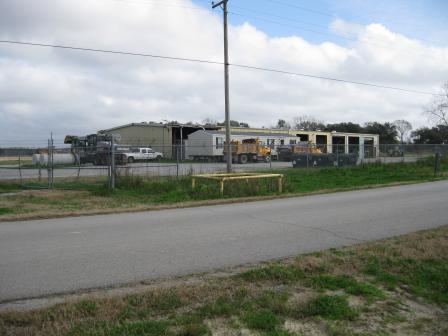 Gulf Coast Vacuum ServicesThe 12.8-acre Gulf Coast Vacuum Services Superfund site is located near the town of Abbeville, Louisiana. Starting in 1969, Gulf Coast Vacuum Services (GCVS) operated a vacuum truck facility and stored oil drilling mud on site. These operations involved dumping waste materials and disposing of used rinse water in on-site pits. These waste disposal practices contaminated soil and groundwater. In 1980, after a citizen’s complaint, EPA investigated site conditions and found crude oil residues in soil and groundwater. A few years later, GCVS declared bankruptcy, and EPA added the site to the Superfund program’s National Priorities List (NPL) in 1989. Cleanup activities included on-site soil stabilization and installation of a clay cover over contaminated sediments. About 8 acres of the site are now clean and suitable for unlimited use. In September 1999, the site owners and the Vermilion Parish Police Jury (VPPJ) entered into an agreement that grants VPPJ access and use of the site. Currently VPPJ uses part of the site for vehicle maintenance activities. This reuse ensures that the access roads and gates will be maintained. EPA deleted the site from the NPL in July 2001.
Gulf Coast Vacuum ServicesThe 12.8-acre Gulf Coast Vacuum Services Superfund site is located near the town of Abbeville, Louisiana. Starting in 1969, Gulf Coast Vacuum Services (GCVS) operated a vacuum truck facility and stored oil drilling mud on site. These operations involved dumping waste materials and disposing of used rinse water in on-site pits. These waste disposal practices contaminated soil and groundwater. In 1980, after a citizen’s complaint, EPA investigated site conditions and found crude oil residues in soil and groundwater. A few years later, GCVS declared bankruptcy, and EPA added the site to the Superfund program’s National Priorities List (NPL) in 1989. Cleanup activities included on-site soil stabilization and installation of a clay cover over contaminated sediments. About 8 acres of the site are now clean and suitable for unlimited use. In September 1999, the site owners and the Vermilion Parish Police Jury (VPPJ) entered into an agreement that grants VPPJ access and use of the site. Currently VPPJ uses part of the site for vehicle maintenance activities. This reuse ensures that the access roads and gates will be maintained. EPA deleted the site from the NPL in July 2001.
For more information:
Gulf State Utilities-North Ryan Street
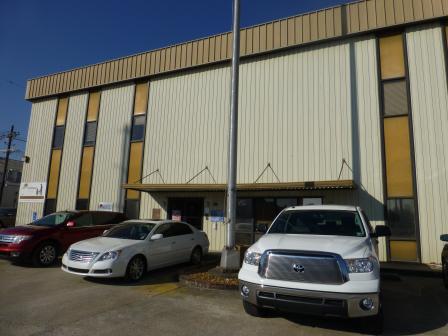 Gulf State Utilities - North Ryan StreetThe 20-acre Gulf State Utilities-North Ryan Street site is located on the Calcasieu River, in Lake Charles, Louisiana. Beginning in 1916, various companies manufactured gas at the site. Site operators discharged coal tar by-products into the wetlands surrounding the site. Operators also repurposed a 6-acre wetlands area as a landfill and disposed of contaminated electrical equipment, drums, transformer oil and other wastes there. With the availability of natural gas, coal gas production activities ended at the site in 1932. In 1988, utility workers digging a trench discovered oily material seeping from the ground. The Louisiana Department of Environmental Quality (LDEQ) and EPA then became involved with site investigations and cleanup. Investigations found that site activities contaminated soil, sediment and groundwater with hazardous chemicals. EPA proposed the site to the Superfund program’s National Priorities List in 1995. Cleanup included removing contaminated soil and sediment and capping remaining contamination. The PRP covered the southern bank of the Calcasieu River with a mat of concrete blocks to help stabilize the shoreline and protect the newly cleaned area. Cleanup also included placement of land and groundwater use restrictions. Long-term groundwater monitoring continues. The PRP continues developing cleanup options to address remaining groundwater contamination. Cleanup activities allow for safe, continued use of the site for industrial and commercial uses. The Lake Charles Division Service Center of Entergy Gulf States Louisiana, LLC operates on about 16 acres of the site and provides support for electrical utility operations throughout Lake Charles. Lake Area Equipment Maintenance, Inc. also operates a warehouse on a portion of the site.
Gulf State Utilities - North Ryan StreetThe 20-acre Gulf State Utilities-North Ryan Street site is located on the Calcasieu River, in Lake Charles, Louisiana. Beginning in 1916, various companies manufactured gas at the site. Site operators discharged coal tar by-products into the wetlands surrounding the site. Operators also repurposed a 6-acre wetlands area as a landfill and disposed of contaminated electrical equipment, drums, transformer oil and other wastes there. With the availability of natural gas, coal gas production activities ended at the site in 1932. In 1988, utility workers digging a trench discovered oily material seeping from the ground. The Louisiana Department of Environmental Quality (LDEQ) and EPA then became involved with site investigations and cleanup. Investigations found that site activities contaminated soil, sediment and groundwater with hazardous chemicals. EPA proposed the site to the Superfund program’s National Priorities List in 1995. Cleanup included removing contaminated soil and sediment and capping remaining contamination. The PRP covered the southern bank of the Calcasieu River with a mat of concrete blocks to help stabilize the shoreline and protect the newly cleaned area. Cleanup also included placement of land and groundwater use restrictions. Long-term groundwater monitoring continues. The PRP continues developing cleanup options to address remaining groundwater contamination. Cleanup activities allow for safe, continued use of the site for industrial and commercial uses. The Lake Charles Division Service Center of Entergy Gulf States Louisiana, LLC operates on about 16 acres of the site and provides support for electrical utility operations throughout Lake Charles. Lake Area Equipment Maintenance, Inc. also operates a warehouse on a portion of the site.
For more information:
Highway 71/72 Refinery
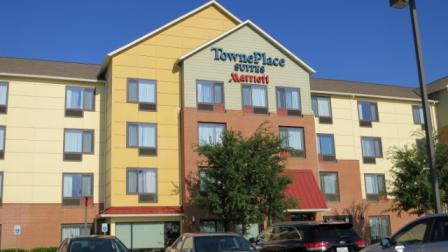 Highway 71/72 RefineryThe 215-acre Highway 71/72 Refinery site is located in Bossier City, Louisiana. Between 1923 and 1929, the Louisiana Oil Refining Corporation built a refinery for the production of home heating and fuel oil. In the mid-1950s, parties dismantled, removed and sold the refinery. In the mid-1960s, construction began for a corridor of Interstate Highway 20 (I-20) across the site. Initial construction work uncovered contaminated soil and groundwater, and railroad and waste materials. The site owner began cleanup efforts in 1966. Soon after the initial property cleanup and construction of the I-20 corridor, redevelopment of the site increased. In the mid-1980s, investigations performed by the State and EPA found evidence that the Site was not thoroughly cleaned in the 1960's as had been reported. Removal Actions were completed between 1996 and 1999 for soil and indoor air. Through its Superfund Alternative program, the EPA, the State, the potentially responsible party, and community leaders approached cleanup in a way that accounted for the existing residents and businesses on the site. The PRP completes soil cleanup at no cost to the resident or business if soil sampling or future construction projects uncover buried waste. The PRP will also install mitigation measures if citizen-requested sampling shows unacceptable levels of site contamination has migrated into indoor air. Land and water use restrictions are in place. Today, the site includes single-family homes, apartment buildings, commercial buildings, churches and light industrial establishments. About 3,500 people live within the former refinery area. Construction of a new hotel complex began in 2011. Completed in 2013, the hotel complex includes two national brand hotels, a swimming pool, event space, a restaurant and a courtyard area. The demolition and excavation of a former hotel structure during new construction allowed cleanup crews to access and remove buried waste. In total, about 44 commercial businesses operate on site.
Highway 71/72 RefineryThe 215-acre Highway 71/72 Refinery site is located in Bossier City, Louisiana. Between 1923 and 1929, the Louisiana Oil Refining Corporation built a refinery for the production of home heating and fuel oil. In the mid-1950s, parties dismantled, removed and sold the refinery. In the mid-1960s, construction began for a corridor of Interstate Highway 20 (I-20) across the site. Initial construction work uncovered contaminated soil and groundwater, and railroad and waste materials. The site owner began cleanup efforts in 1966. Soon after the initial property cleanup and construction of the I-20 corridor, redevelopment of the site increased. In the mid-1980s, investigations performed by the State and EPA found evidence that the Site was not thoroughly cleaned in the 1960's as had been reported. Removal Actions were completed between 1996 and 1999 for soil and indoor air. Through its Superfund Alternative program, the EPA, the State, the potentially responsible party, and community leaders approached cleanup in a way that accounted for the existing residents and businesses on the site. The PRP completes soil cleanup at no cost to the resident or business if soil sampling or future construction projects uncover buried waste. The PRP will also install mitigation measures if citizen-requested sampling shows unacceptable levels of site contamination has migrated into indoor air. Land and water use restrictions are in place. Today, the site includes single-family homes, apartment buildings, commercial buildings, churches and light industrial establishments. About 3,500 people live within the former refinery area. Construction of a new hotel complex began in 2011. Completed in 2013, the hotel complex includes two national brand hotels, a swimming pool, event space, a restaurant and a courtyard area. The demolition and excavation of a former hotel structure during new construction allowed cleanup crews to access and remove buried waste. In total, about 44 commercial businesses operate on site.
For more information:
- Reuse and the Benefit to the Community: Highway 71/72 Refinery Case Study (2015) (PDF)(14 pp, 2.3 MB, About PDF)
- Superfund Site Profile Page
Mallard Bay Landing Bulk Plant
The 10-acre Mallard Bay Landing Bulk Plant (MBLP) Superfund site is located in Cameron Parish, northeast of Grand Chenier, Louisiana. The site consists of two 5-acre areas separated by Talen’s Marine, an active marina and dock. From early 1980 through 1983, the MBLP facility operated as a crude oil refinery. In 1987, the owners filed for bankruptcy and the facility closed. In 1993, an inspection revealed oily liquids and sludges in tanks and other environmental concerns. In 1998 and 1999, EPA began cleanup activities, including the removal and off-site disposal of oil and waste material from on-site tanks. In 2000, EPA added the site to the Superfund program’s National Priorities List (NPL) to address remaining site contamination. In 2003 and 2004, EPA removed all remaining tank sludges, contaminated soil and structures. EPA deleted the site from the NPL in 2005. Cleanup levels allow a full range of uses at the site. Currently, Talen’s Marine is using the site as a staging and storage area.
For more information:
